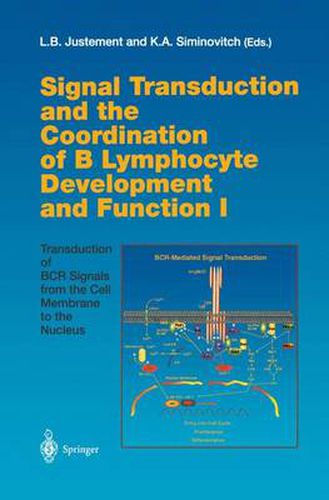Readings Newsletter
Become a Readings Member to make your shopping experience even easier.
Sign in or sign up for free!
You’re not far away from qualifying for FREE standard shipping within Australia
You’ve qualified for FREE standard shipping within Australia
The cart is loading…






This title is printed to order. This book may have been self-published. If so, we cannot guarantee the quality of the content. In the main most books will have gone through the editing process however some may not. We therefore suggest that you be aware of this before ordering this book. If in doubt check either the author or publisher’s details as we are unable to accept any returns unless they are faulty. Please contact us if you have any questions.
Proper development and differentiation of B lymphocytes is es sential to ensure that an organism has the ability to mount an effective humoral immune response against foreign antigens. The immune system must maintain a balance between the deletion of harmful self-reactive B cells and the generation of a diverse rep ertoire of B cells that has the ability to recognize an almost un limited array of foreign antigens. The need to delete self-reactive cells is tempered by the need to avoid the generation of large functional holes in the repertoire of foreign antigen-specific B cells that patrol the periphery. To accomplish this, the immune system must reach a compromise by eliminating only the most dangerous autoreactive clones, while allowing less harmful au toreactive B cells to exist in the periphery where they may com plement the organism’s ability to mount a rapid response against invading micro-organisms. Those autoreactive cells that do enter the peripheral pool are subject to a number of conditional re straints that effectively attenuate their ability to respond to self antigens. Deleterious alterations in the homeostasis between tolerance induction and recruitment of B cells into the functional repertoire may lead to increased susceptibility to autoimmune disease or infection, respectively. Therefore, delineation of the molecular processes that maintain immunological homeostasis in the B cell compartment is critical.
$9.00 standard shipping within Australia
FREE standard shipping within Australia for orders over $100.00
Express & International shipping calculated at checkout
This title is printed to order. This book may have been self-published. If so, we cannot guarantee the quality of the content. In the main most books will have gone through the editing process however some may not. We therefore suggest that you be aware of this before ordering this book. If in doubt check either the author or publisher’s details as we are unable to accept any returns unless they are faulty. Please contact us if you have any questions.
Proper development and differentiation of B lymphocytes is es sential to ensure that an organism has the ability to mount an effective humoral immune response against foreign antigens. The immune system must maintain a balance between the deletion of harmful self-reactive B cells and the generation of a diverse rep ertoire of B cells that has the ability to recognize an almost un limited array of foreign antigens. The need to delete self-reactive cells is tempered by the need to avoid the generation of large functional holes in the repertoire of foreign antigen-specific B cells that patrol the periphery. To accomplish this, the immune system must reach a compromise by eliminating only the most dangerous autoreactive clones, while allowing less harmful au toreactive B cells to exist in the periphery where they may com plement the organism’s ability to mount a rapid response against invading micro-organisms. Those autoreactive cells that do enter the peripheral pool are subject to a number of conditional re straints that effectively attenuate their ability to respond to self antigens. Deleterious alterations in the homeostasis between tolerance induction and recruitment of B cells into the functional repertoire may lead to increased susceptibility to autoimmune disease or infection, respectively. Therefore, delineation of the molecular processes that maintain immunological homeostasis in the B cell compartment is critical.